After an initial try, I will once again take on the task of creating a classification system for Transformers, based on their anatomy and transformation schemes. I already pursued this project in the previous incarnation of my blog, but after days of tweaking I found that it had an inherent flaw; I based the system on the anatomy of the alt-modes of Transformers, giving rise to a number of unforeseen problems. It is not that strange that I started from the alt-modes, after all, this is what the creators of the Diaclone Car Robo toys must have done back in day, they had a car and asked themselves “how does this turn into a robot?”.
This time, however, I will start from the robot modes and ask “how does this turn into a vehicle (etc)?”. Doing so has resulted in a system that is simpler as well as more consistent and precise. What have not changed, is the basic concept of “types”, perhaps the system´s largest contribution. Note that in the examples I am referring to the original G1 or G2 toys of the characters named, as these sub-lines are the ones I know best, and originally developed this system for describing. Here we go!
Above: Applying segments-thinking on Transformers, locust to the left, schematic robot to the right
Basic anatomy
In biology, insects are classified according to the number of segments they possess, and what sub-segments, or appendages are attached to these. In fact, vertebrates are segmented as well, although more subtly so; but consider the vertebrae in your spine, and the ribs that make up your ribcage. For Transformers, however, such a detailed approach would be redundant, instead I have chosen to describe them as follows:
Since Transformers (as in, the characters in the fiction) usually have neck and waist articulation, but generally no movement between the chest and abdomen, I have chosen to divide their bodies into three basic segments; A (head), B (chest and abdomen, or upper torso) and C (pelvis, or lower torso). These basic segments in turn have appendages; on segment B we find arms, and on segment C we find legs. This is the basic anatomy of all Transformers with anthropomorphic robot modes. Transformers can have additional appendages on their segments, such as a pair of wings for Divebomb and Swoop, etc. In fact, any component being able to move against the segment it is attached to can be classified as an appendage, but let´s not get ahead of ourselves. For now, let´s just define the distinction between a segment and an appendage; segments are basic building blocks of a Transformer´s robot mode, which have their center positioned along the anterior-posterior (“head-tail”) axis of the robot. Hence, legs don´t qualify as segments, as they both attack laterally to the imagined “spine” of the robot. Now, characters such as Trypticon have tails, which according to the definition above is another segment, but as we shall see, this hypothetical “D” segment does not play a role in classifying Transformers, and will thus hereon be treated as an appendage.
Another note, I am well aware all Transformers toys do not have neck and waist articulation, but we can all agree on that it is implied the characters have it. So when an actual segmentation is missing in a toy, suck as for the lack of neck joint for G1 Brawn, we talk about implied segments. In some cases, segments might be missing altogether, for example, the toys of G1 Ratchet/Ironhide do not have heads (unless you count their “seat with a sticker” arrangements), and G1 Silverbolt lacks a clear pelvis area. In such cases, we refer to animation models for the characters of the toys and based on this we imagine an assumed segment. Having sorted that out, let´s take a look at how to designate types.
Above: Sideswipe, Ratchet, Brawn and Silverbolt showing off actual, implied and assumed segments
Body reorientation patterns and basic types
Since all Transformers share a common anatomy of the few basic segments head (A), chest-abdomen (B) and pelvis (C) usually with a pair of arms and legs attached to the two respective latter ones, in what sense do they have different body types? This comes down to the most fundamental aspect of Transformers; transformation. While they might look similar in robot modes, there is a marked difference in how they redistribute their body parts to achieve their alternative mode. The very first step of this process is body reorientation pattern, that is, how their bodies (more specifically, their torsos) are spatially reoriented as they assume vehicle modes. These different reorientation patterns in turn determines what type the Transformer is. For this, we will make use of the segment nomenclature in the previous section; the body segment of the robot mode that becomes located at the front end of the alt mode gives the name to the reorientation pattern and hence the type; in other words, we get “A”, “B” or “C”.
Above: The basic body reorientation patters and the resulting types
Examples:
-Sideswipe turns into a Lamborghini Countach, and in doing so, he falls forward, positioning his head (segment A) towards the front end of the vehicle. Hence, he is type A.
Above: Body type A, represented by Sideswipe
-Sunstreaker also turns into a Lambo Countach, but he instead falls backward and position his feet in the front end of the vehicle. Now, feet, part of the legs, are technically appendages and not segments, but they are attached to, and thus part of, segment C. Furthermore, of the basic three segments, his pelvis (C) is the one oriented closest to the end of the front end of the car. Hence, he is type C.
Above: Body type C, represented by Sunstreaker
-Optimus Prime turns into a cab-over-engine White Freightliner truck. However, for achieving this, he neither falls forward, nor backward, like the two Lambo “brothers”. Instead, his torso “sinks” down to ground level, retaining its original upright orientation in the three-dimensional room. Hence, his type is not A, nor C, but B. As it is, his chest-abdomen segment (B) is the one oriented at the front of the vehicle, but I already want to point out that in some cases, as for Trailbreaker, this might not be the case. But remember, it is the body reorientation pattern that ultimately decides the robot´s type.
Above: Transformation type B, represented by Optimus Prime
Secondary reorientations
Now, the above reorientation patterns/types are of course not the only existing ones. In some cases, some degree of rotation of the robot is needed before “going down”. Since this rotation is usually done in one or more quarters of a circle, I count the secondary level of reorientation in this unit, as parts of a counter-clockwise rotation. The most common degree of rotation is half a circle, i.e. two quarters. When this is the case, we add a “2” after the body type designation. As a result, we can add a zero after the type designation for non-rotating Transformers, but it is not needed unless for clarification.
Examples:
-Point Blank rotates two quarters before falling “forwards”, i.e. he really falls backwards, but his head gets located in the front of the vehicle as he does so. In other words, he is type A2.
-Siren rotates two quarters before falling “backwards” so that his head (didn´t it detach) ends up in the rear of the vehicle. Type: C2
-The core robot of Powermaster Optimus Prime is type B, but has to rotate two quarters to assume alt-mode, thus he is B2. At least technically, but remember that his rotation is the result of this mold having faux chest windshields. As I assume that the character Optimus´s intended reorientation pattern is still a straight B, an alternative designation for this toy´s type could be, adding a small “i” for “Intended”: “iB0”
The relatively obscure Action Master Elite Windmill provides a much rare example of an A1 type Transformer. He falls forward, but rotates one quarter for assuming his helicopter mode. While this toy, only released in Europe during the interim post 1990 G1 era, has been derided for being generally awful, can we at least agree that it has a fair share of originality to its transformation scheme? 😉
-Scattershot is also quite unusual, being C-type with a one-quarter rotation, type C1.
-Megatron poses a special example in another regard. He does not turn into a vehicle, but a gun, but our typing system is applicable on any kind of alt mode. Megatron keeps his chest upright while assuming gun mode, thus he is “B”. However, to assume alt mode he has to rotate his upper torso a quarter of a circle counter-clockwise. Thus, he is type B1.
For orientating purposes, let us now add a few more characters and their types, for a general overview:
A0 (/A): Jazz, Brawn, Dead End, Hot Rod Laser Optimus Prime, Tank Megatron
A1: Windmill
A2: Pointblank, Crosshairs, Boss
B0 (/B): Optimus Prime, Cosmos, Soundwave, Blaster, Thunder Clash
B1: Megatron, Browning
B2: Powermaster Optimus Prime (core robot)
C0 (/C): Sunstreaker, Bumblebee, Wheeljack
C1: Scattershot
C2: Siren, Hosehead, Combat Heroes Optimus Prime (“Sureshot” in European G2)
An interesting fact is that we find various iterations of Optimus represented in three or four categories (depending on how we count PM Optimus´s core bot). Yes, Laser Optimus Prime´s head disappear into the torso of the robot when truck mode is assumed, but the reorientation of the torso is still “A”-type.
Above: The ABC of Transformers typology
Quick recap:
-All Transformers can be described as being constituted of three basic segments; A (head), B (upper torso) and C (lower torso).
-All Transformer can be designated as being a basic type, depending on how its robot mode body is reoriented into its alt mode; whether it falls forward, “sinks” or falls backward.
-The basic body segment ending up in the front end of their alt mode, determines the name of the type, “A”, “B” or “C”.
– Some Transformers might have an extra tail segment, “D”, these however don´t play a role in designating the body type.
-Some Transformers require additional reorientation to transform, by the robot rotating a number of quarters of a circle counter-clockwise before “going down”. In such cases, the number of quarters rotated is added after the letter designation, i.e. “A2”, etc.
In the next part we will look at a few interesting, but tricky, examples to apply the concept of types on, wait for it! 😉
My usual thanks to Seibertron and TFWiki for the much needed reference photography and to my friend and mentor Tekering for some useful input along the way
EDIT: Having finally found an A1 type Transformer in Windmill, I added him as an example and had him complete my taxonomy chart!

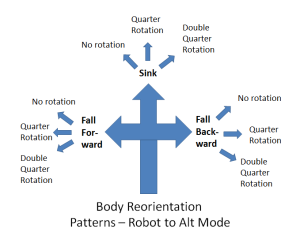
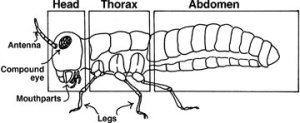
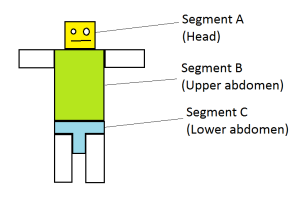
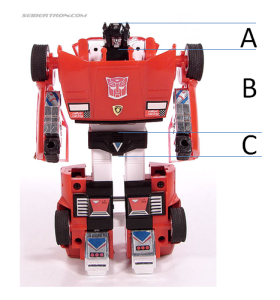
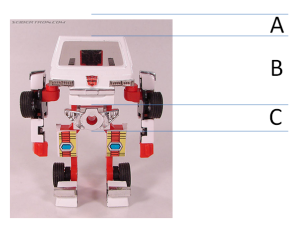
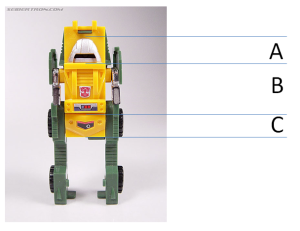
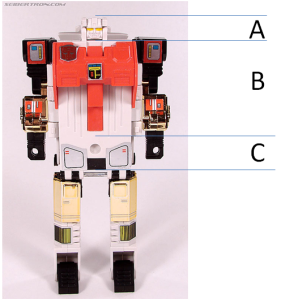
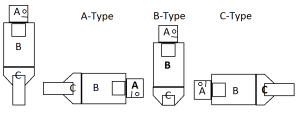
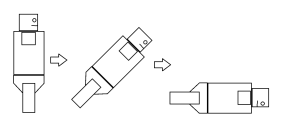
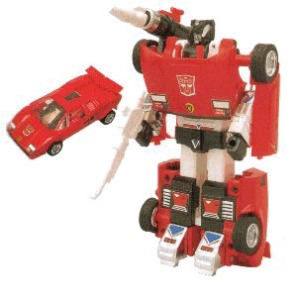
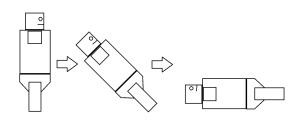
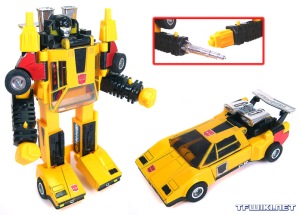
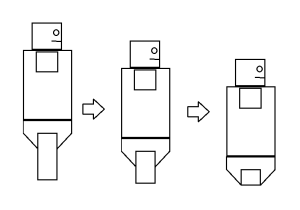
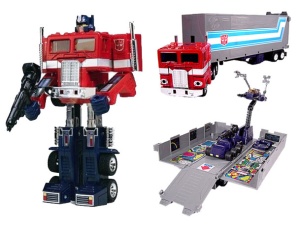
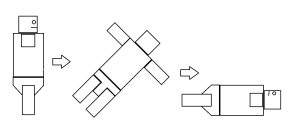
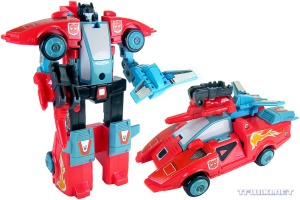
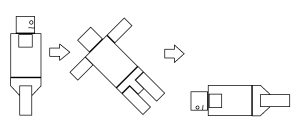
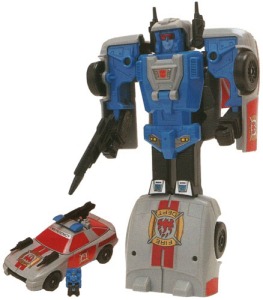
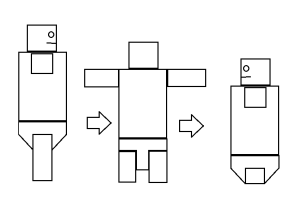
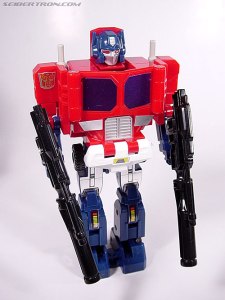
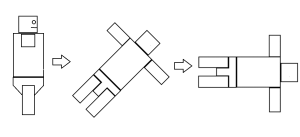
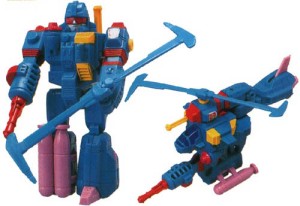
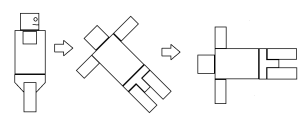
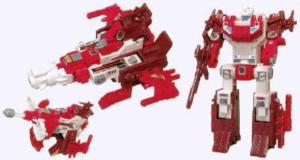
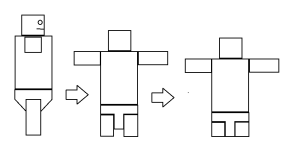
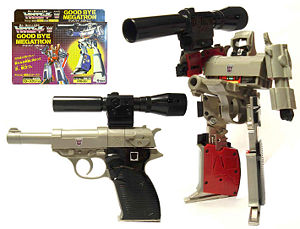
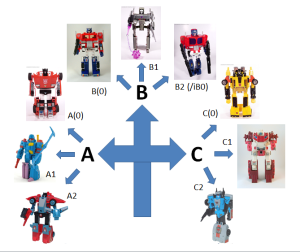
You talk about three segments, but these type distinctions are really only based on the torso and pelvis; someone who’s chest ends up in front of their head is still counted as only “falling forward?”
Jetfire ends up with his head turned around and under his torso.
Then there’s Armada Bonecrusher; his left side rotates one way and his right side the opposite.
LikeLike
Hi, and thank you for your interesting response! As for your comment, I would go so far as to say that it is really only the reorientation of the B segment that really matters. The A and C designations for falling forward and backward refer to which segment USUALLY ends up first in the alternate mode. What does not change however, is how segment B, arguably where the center of gravity is placed in the robot, reorients itself.
As for Armada Bonecrusher, remember that I intended to use this system foremost for G1 and G2, but sure, it should be applicable elsewhere. Yes, he is tricky, but I got some good advice here: http://www.allspark.com/forums/topic/112234-a-classification-system-for-transformers/
Generally, when the torso split in multiple parts, the main part should be the one lying closest to the center of gravity of the robot, alternatively, as in this case, the one with the greatest amount of mass attached to it.
LikeLike